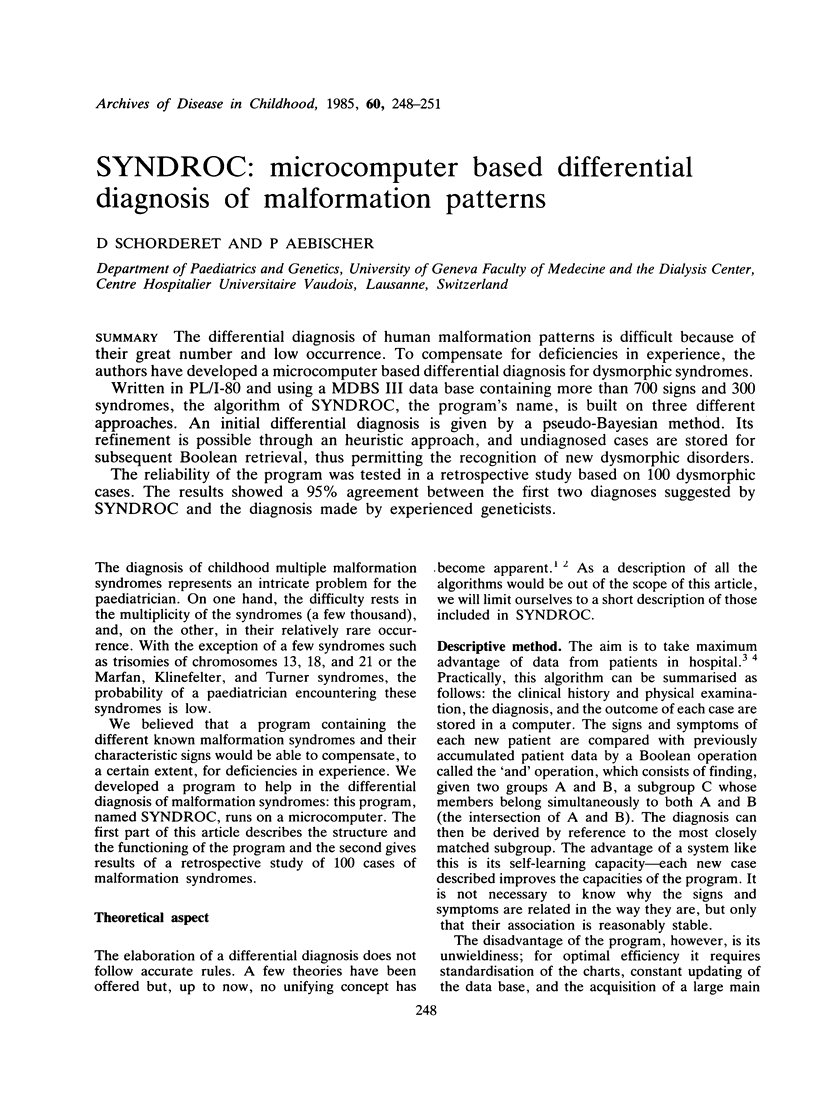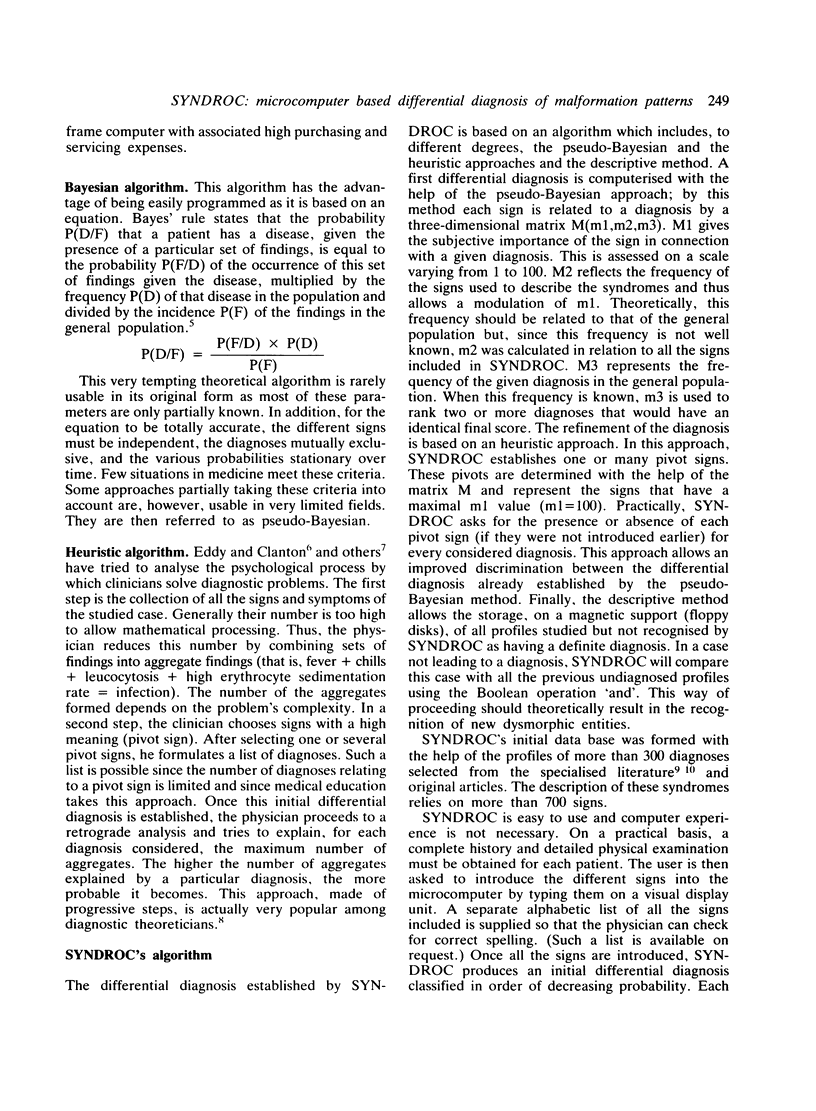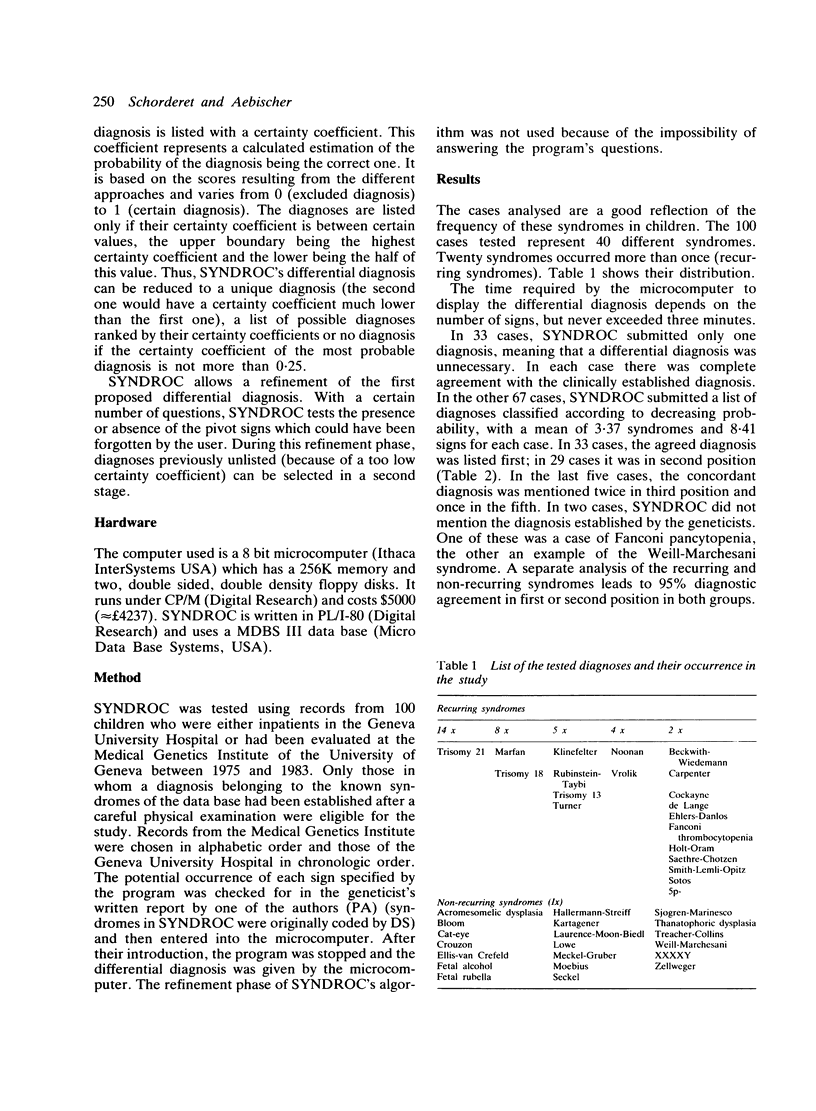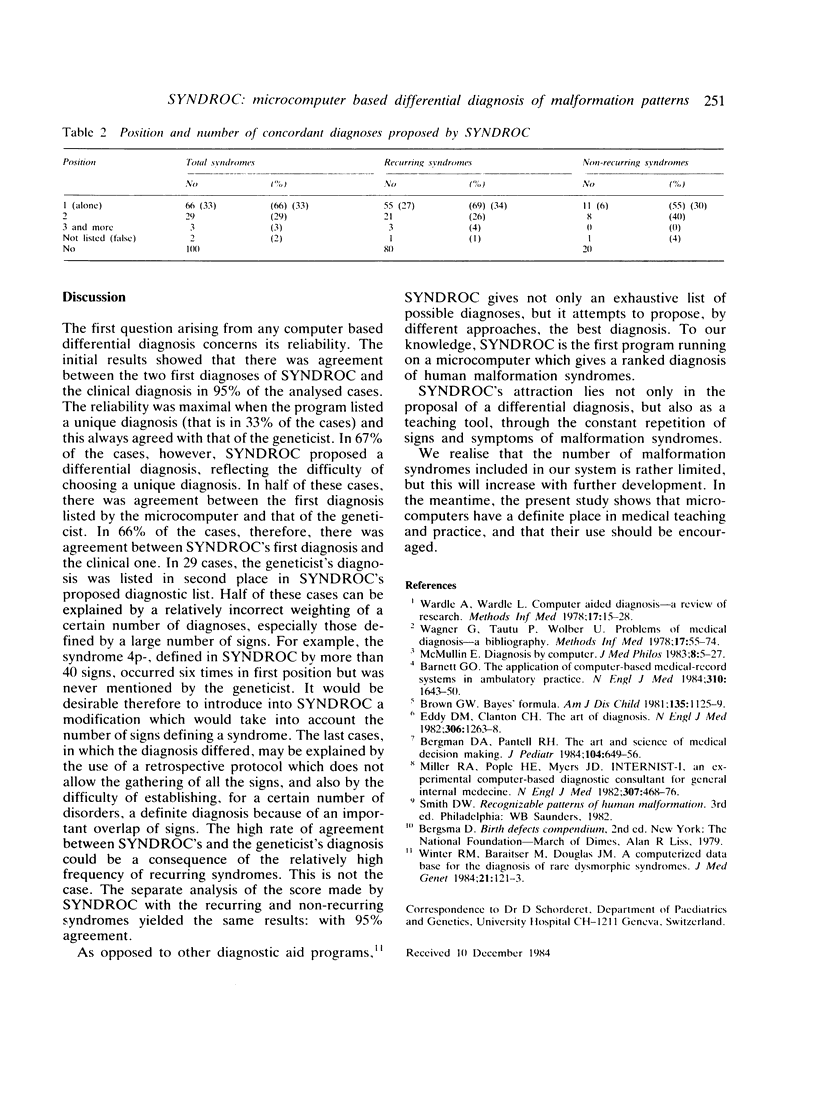Abstract
The differential diagnosis of human malformation patterns is difficult because of their great number and low occurrence. To compensate for deficiencies in experience, the authors have developed a microcomputer based differential diagnosis for dysmorphic syndromes. Written in PL/I-80 and using a MDBS III data base containing more than 700 signs and 300 syndromes, the algorithm of SYNDROC, the program's name, is built on three different approaches. An initial differential diagnosis is given by a pseudo-Bayesian method. Its refinement is possible through an heuristic approach, and undiagnosed cases are stored for subsequent Boolean retrieval, thus permitting the recognition of new dysmorphic disorders. The reliability of the program was tested in a retrospective study based on 100 dysmorphic cases. The results showed a 95% agreement between the first two diagnoses suggested by SYNDROC and the diagnosis made by experienced geneticists.
Full text
PDF



Selected References
These references are in PubMed. This may not be the complete list of references from this article.
- Barnett G. O. The application of computer-based medical-record systems in ambulatory practice. N Engl J Med. 1984 Jun 21;310(25):1643–1650. doi: 10.1056/NEJM198406213102506. [DOI] [PubMed] [Google Scholar]
- Bergman D. A., Pantell R. H. The art and science of medical decision making. J Pediatr. 1984 May;104(5):649–656. doi: 10.1016/s0022-3476(84)80938-5. [DOI] [PubMed] [Google Scholar]
- Brown G. W. Bayes' formula. Conditional probability and clinical medicine. Am J Dis Child. 1981 Dec;135(12):1125–1129. doi: 10.1001/archpedi.1981.02130360033012. [DOI] [PubMed] [Google Scholar]
- Eddy D. M., Clanton C. H. The art of diagnosis: solving the clinicopathological exercise. N Engl J Med. 1982 May 27;306(21):1263–1268. doi: 10.1056/NEJM198205273062104. [DOI] [PubMed] [Google Scholar]
- McMullin E. Diagnosis by computer. J Med Philos. 1983 Feb;8(1):5–27. doi: 10.1093/jmp/8.1.5. [DOI] [PubMed] [Google Scholar]
- Miller R. A., Pople H. E., Jr, Myers J. D. Internist-1, an experimental computer-based diagnostic consultant for general internal medicine. N Engl J Med. 1982 Aug 19;307(8):468–476. doi: 10.1056/NEJM198208193070803. [DOI] [PubMed] [Google Scholar]
- Wagner G., Tautu P., Wolber U. Problems of medical diagnosis--a bibliography. Methods Inf Med. 1978 Jan;17(1):55–74. [PubMed] [Google Scholar]
- Wardle A., Wardle L. Computer aided diagnosis--a review of research. Methods Inf Med. 1978 Jan;17(1):15–28. [PubMed] [Google Scholar]
- Winter R. M., Baraitser M., Douglas J. M. A computerised data base for the diagnosis of rare dysmorphic syndromes. J Med Genet. 1984 Apr;21(2):121–123. doi: 10.1136/jmg.21.2.121. [DOI] [PMC free article] [PubMed] [Google Scholar]


